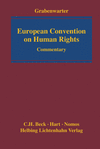Zusammenfassung
Die Europäische Menschenrechtskonvention (EMRK), die seit dem 3. September 1953 für alle Mitgliedstaaten des Europarats verbindlich ist, garantiert wichtige Menschenrechte und Grundfreiheiten, darunter insbesondere das Recht auf Leben, das Verbot von Folter und Zwangsarbeit, das Recht auf Freiheit und Sicherheit, das Recht auf ein faires Verfahren, das Recht auf Achtung des Privat- und Familienlebens, die Gedanken-, Gewissens- und Religionsfreiheit, das Recht auf freie Meinungsäußerung, die Versammlungs- und Vereinigungsfreiheit, das Recht auf Eheschließung, das Recht auf wirksame Beschwerde und das Diskriminierungsverbot.
Die Einhaltung dieser Rechte und Freiheiten überwacht der Europäische Gerichtshof für Menschenrechte (EGMR), in vielen Fällen quasi als „letzte Instanz“. Seine Entscheidungen sind für die Mitgliedstaaten bindend. Die Bedeutung der EMRK und der Rechtsprechung des Straßburger Gerichtshofs wird nach dem Beitritt der EU zur Konvention noch zunehmen. Der Kommentar von Grabenwarter analysiert systematisch alle Artikel der Konvention, unter Berücksichtigung der einschlägigen Rechtsprechung und des Schrifttums.
Abstract
The European Convention on Human Rights (ECHR) entered into force on September 3, 1953 with binding effect on all member states of the Council of Europe. It grants the people of Europe a number of fundamental rights and freedoms: right to life, prohibition of torture, prohibition of slavery and forced labour, right to liberty and security, right to a fair trial, no punishment without law, right to respect for private and family life, freedom of thought, conscience and religion, freedom of expression, freedom of assembly and association, right to marry, right to an effective remedy, prohibition of discrimination; plus some more by additional protocols to the Convention (Protocols 1 (ETS No. 009), 4 (ETS No. 046), 6 (ETS No. 114), 7 (ETS No. 117), 12 (ETS No. 177) and 13 (ETS No. 187)).
Any person who feels that his or her rights are being violated under the ECHR by the authorities in one of the member states can bring the case to the European Court of Human Rights, established under the Convention. The States are bound by the Court’s decisions.
The impact of the Convention and the Strasbourg Court is very high indeed. This will further increase following the accession of the European Union to the Convention.
Professor Grabenwarter’s commentary systematically deals with the Convention, article-by-article, including development, scope, relevant case-law and literature.
- Kapitel Ausklappen | EinklappenSeiten
- 386–430 Protocol No. 1 386–430
- 431–443 Protocol No. 4 431–443
- 444–463 Protocol No. 6 444–463
- 464–466 Protocol No. 12 464–466
- 467–467 Protocol No. 13 467–467
- 553–565 Practice Directions 553–565
- 566–577 Index 566–577

